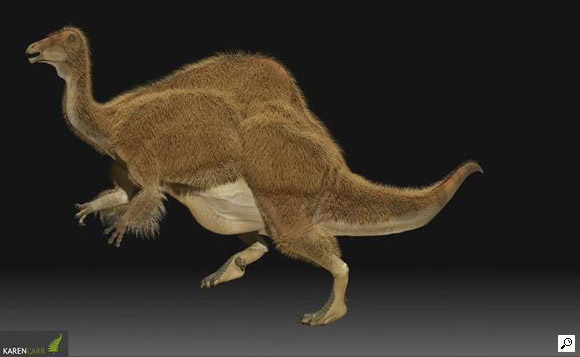Turns out, (some) dinosuars had feathers, the little bas**rds.

There is no great single answer I am aware of to this issue. Here are approaches to consider depending upon your specific need:
** Individually modeled feathers with quills can be made with high fidelity. As noted by @IIBit, hair systems, and/or a particle system of particle systems -- How can particles be emitted from particles? -- require some patience but look great. They are a bugger to render and adding flight motion further complicates the deal.
** Using a combination of hair particles and meshes allows for some realism while using comparatively lighter meshes rather than purely particle-based approaches. See https://blenderartists.org/forum/showthread.php?232361-Quest-for-Photo-Real-Feathers for details. So you are using a feather texture -- either a photo or an image you create -- with alpha and a mesh.
** Using Blender's hair shapes can give satisfactory results at some distances. See https://blenderartists.org/forum/archive/index.php/t-282959.html for examples and https://wiki.blender.org/index.php/Doc:UK/2.6/Manual/Render/Cycles/Hair_Rendering for shape information. That Golden Eagle is one of my all time favorite blender creations and whoever Ricardo 3D is, he gets a gold star for that model... I am envious.
The deinocherious above uses some of all of the approaches noted: the 'primary' feathers on the front arms are detail models with associated armature/bones, and a few others are true feathers; much of the remained are based on emu curly primitive feathers using Blender hair shapes.
You can also create a "heavy" particle system on your animal and then create color, normal and bump maps to create the appearance of feathers, as here:
) EDIT Had to remove this image until the museum opens...
When distance allows, this gives you the chance to add feathers for animated critters when used a "safe" distance from the camera.
Dinosaur Island, http://www.imdb.com/title/tt3261302/, while not a blockbuster, gets props for their feathered dinos. I believe some of the CG was done in Blender....
Maya's dynamic paint feature has some options that help with feathers, but I am not aware of a 5-star solution anywhere other than through combinations of approaches... and I would welcome info on your results!











